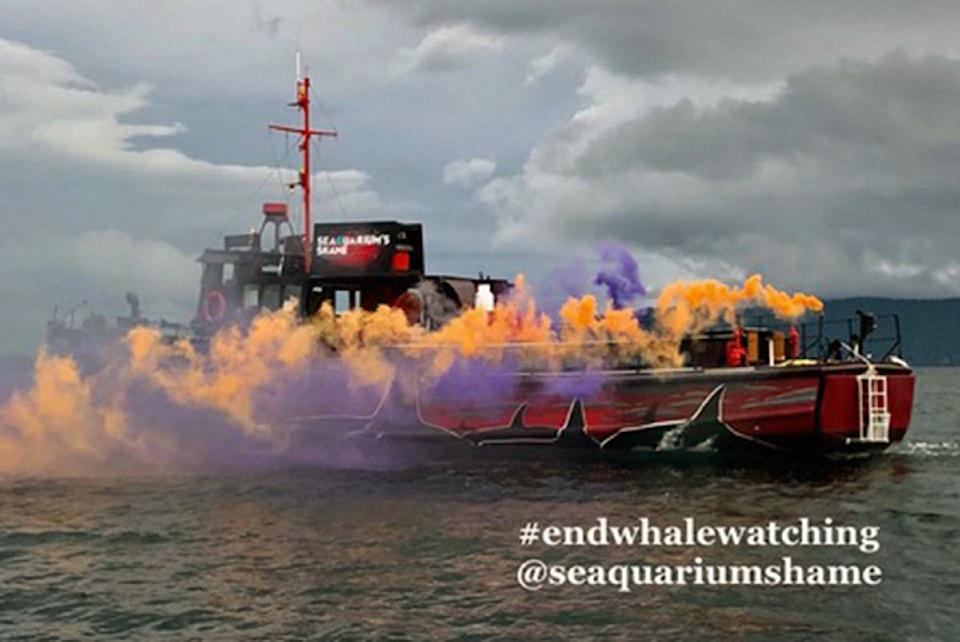A longtime environmental activist plans to sail a boat of shame on the Salish Sea in an effort to end commercial whale watching.
“The Salish Sea is not a circus [and] orcas are not for entertainment,” says James Whitehead, the boat captain and a performance artist in Victoria. “They are an extremely rare and precious animal.”
READ ALSO: Bigg’s orcas in the Salish Sea point to shifting habitat of resident killer whales
Whitehead plans to protest with a 75-foot former Canadian Forces Navy vessel he has named the Seaquarium’s Shame. Painted red with images of orcas swimming along the base, the boat aims to disrupt commercial whale-watching on the West Coast.
“It’s scientifically documented that orcas change their behaviour from socializing and foraging to [travelling] in the presence of whale watching boats,” he says.
“How are the whales compensated for their daily performances for the whale-watching industry’s services? The whale-watching industry is turning the Salish Sea into a circus. A seat on a whale-watching boat is like a seat in a seaquarium.”
READ ALSO: New regulations increase boating distance from killer whales
READ ALSO: Education first step in Canada’s new southern resident killer whale conservation mandates
| Activist Jim White says a seat on a whale watching boat "is a seat on the stands of the Miami Seaquarium." (Photo Courtesy of Jim White) |
Whitehead points to the federal government’s interim order that prohibited vessels from approaching any killer whale within a 400-metre distance. That order adding distance ended Oct. 31, reverting to previous rules.
The Pacific Whale Watch Association had signed an agreement to stop offering tours of southern resident orcas, with a caveat that they could approach transient orcas to a distance of up to 200 metres. Other organizations have also limited the time they spend following orcas.
Whitehead says the changes only show that whale-watching companies are aware of their impact, and any form of whale watching is going harm both residents and transients.
He also hopes to bring attention to Tokitae, also known as Lolita, a southern resident captured in Puget Sound and taken to the Miami Seaquarium 49 years ago – where she still lives.
Whitehead says the 53-year-old animal is rarely counted as one of the remaining southern residents.
“Tokitae is the last surviving wild orca in North America still held captive,” Whitehead says. He wants the attraction to work with an Indigenous tribe in northern Washington State to send the whale back home.
READ ALSO: 30-year-old orca dies at SeaWorld’s Orlando park
READ ALSO: Three southern resident killer whales declared dead plunging population to 73
Whitehead says he knows his approach is unconventional, and while he won’t disclose when or where his boat will appear, he hopes its presence will get people to reconsider the act of whale viewing.
“Would it be okay to chase a bear in an SUV so long as you were 200 metres away from it?” he poses. “This is a different approach to this issue than what you normally see.
“I’m coming at this as a citizen with a deep emotional connection to the ocean. I think it brings it down to a very human scale … if we really love our coast and our environment, it’s not to hard to do that respectfully and not love it to death.”
nina.grossman@blackpress.ca
Follow us on Instagram Like us on Facebook and follow us on Twitter.
